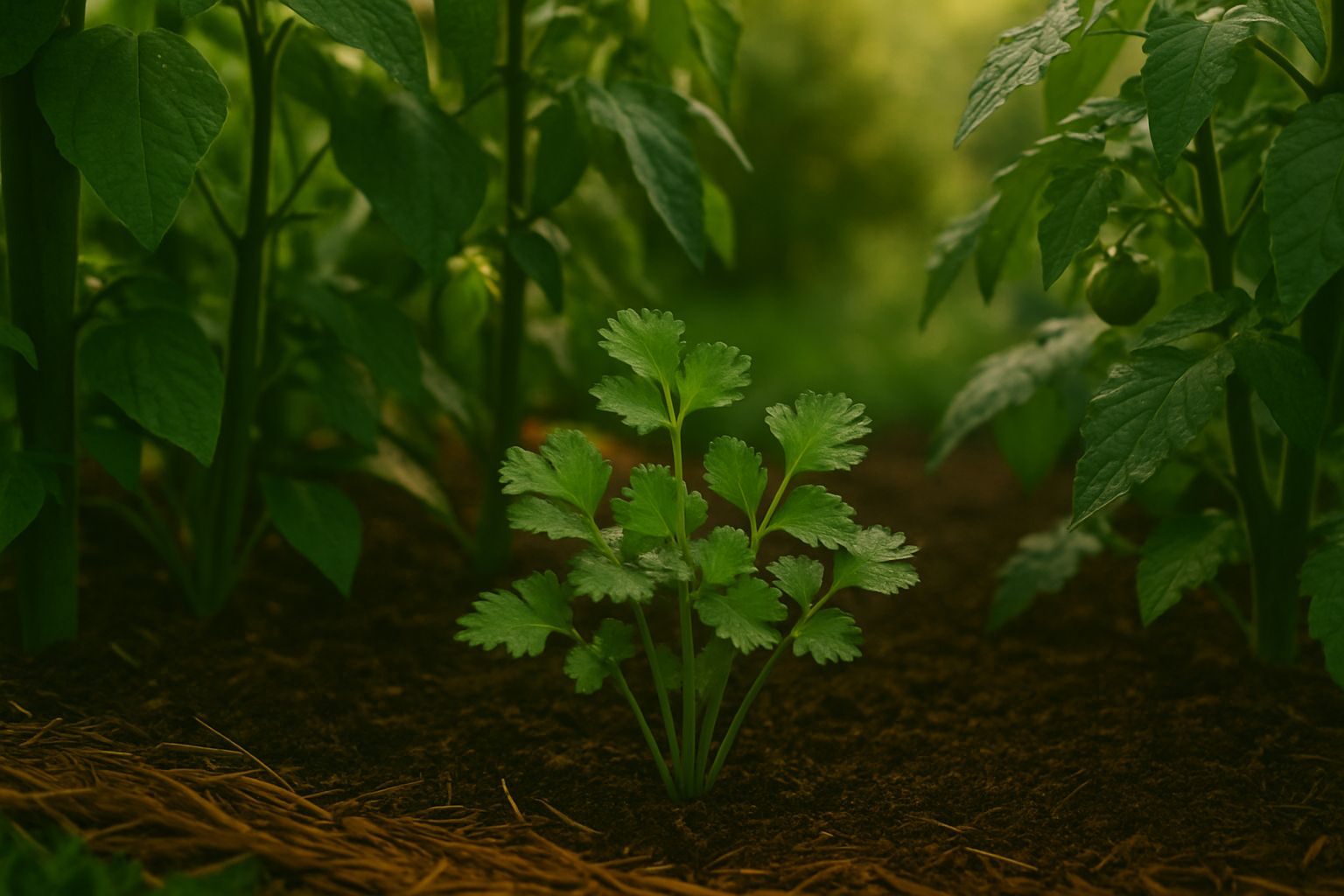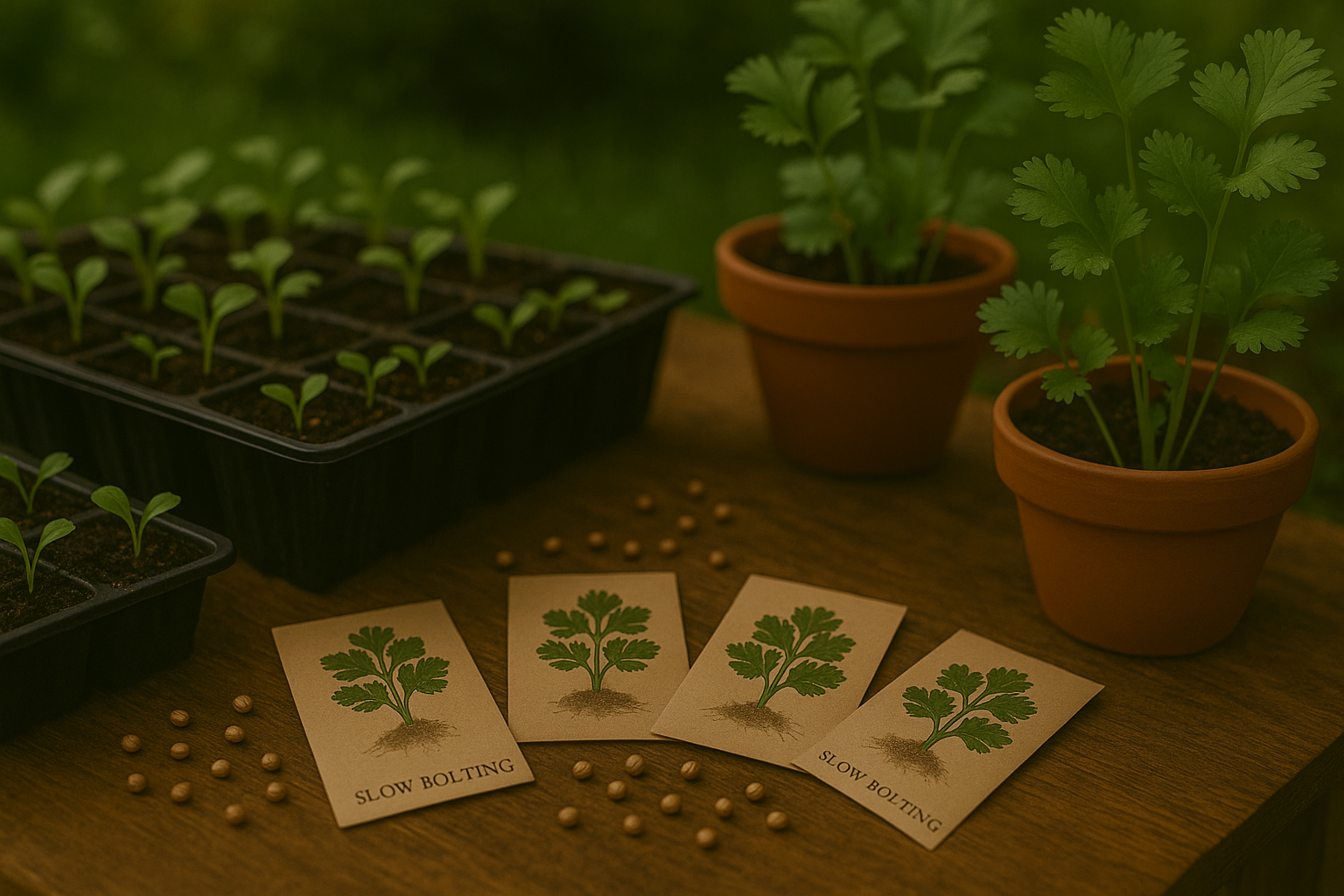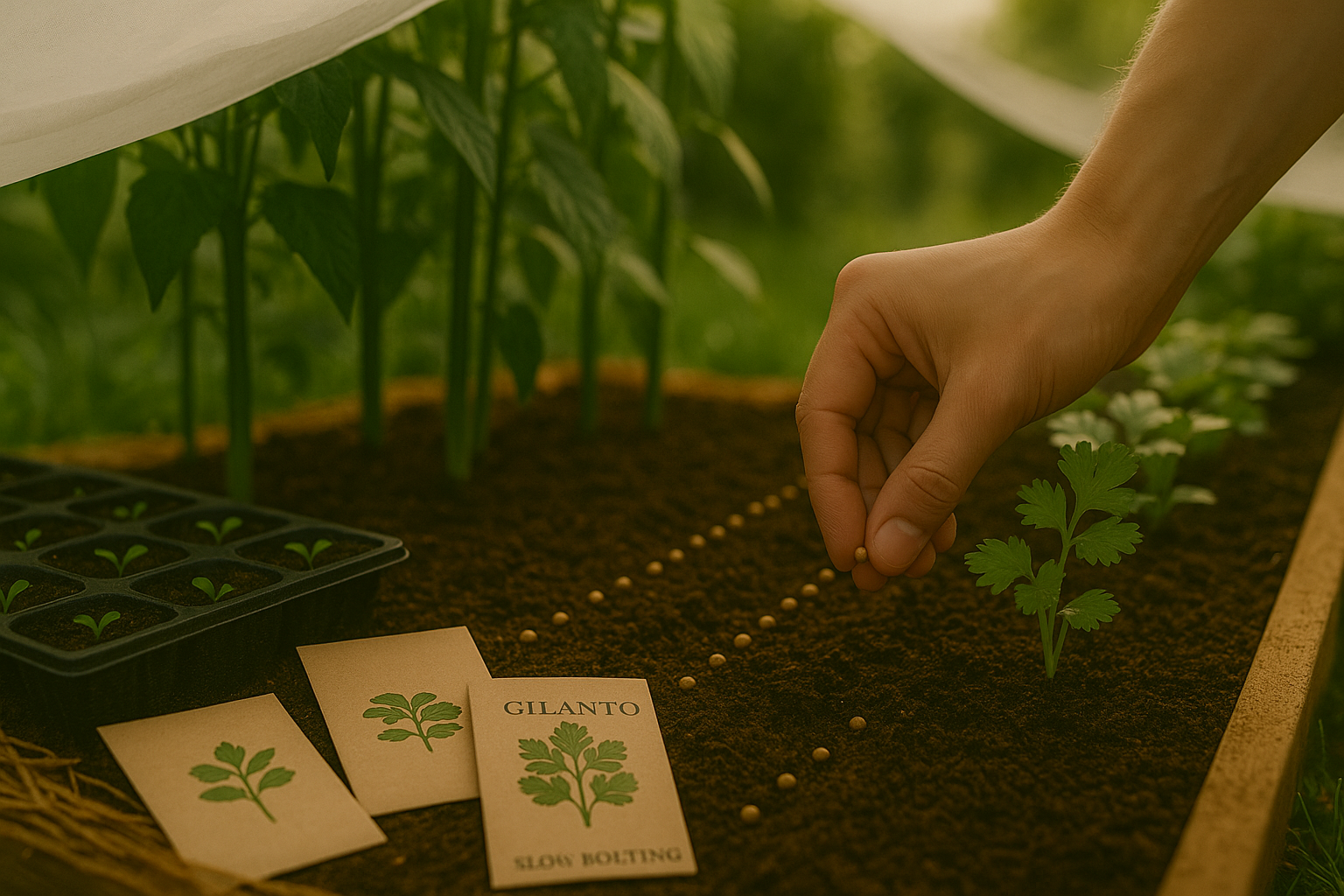Understanding Why Cilantro Bolts
Bolting is a term gardeners use to describe when a plant, like cilantro, suddenly sends up a flower stalk and shifts its energy from growing tasty leaves to producing seeds. For cilantro, this is often seen as a problem because the leaves lose their signature flavor, turning bitter and less tender—definitely not what you want in your kitchen garden or fresh recipes.
Cilantro tends to bolt in response to specific environmental cues, most notably rising temperatures and increasing hours of daylight—conditions common in late spring and early summer. When cilantro experiences longer, warmer days, it interprets these cues as a sign that its growing season is ending, prompting the plant to reproduce as quickly as possible.
This biological response ensures survival but frustrates gardeners hoping to harvest fragrant leaves all summer.
The early signs of cilantro bolting are fairly distinct:
- The central stem elongates rapidly, growing taller and leggier than normal.
- The leaves at the top become finer and more feathery compared to the lush, broad lower leaves you’re used to.
- Sometimes, tiny buds or early flower heads start to form at the tip.
At this stage, the leaf flavor deteriorates swiftly. So if you see these signs, act fast—harvest the remaining good leaves and consider sowing a new batch in partial shade or cooler weather to enjoy fresh cilantro for a longer period.
Ideal Conditions for Growing Cilantro

Cilantro thrives best in cool weather, making it perfect for early spring or fall gardens in most regions. It prefers temperatures between 50°F and 75°F, as heat can stress the plant and trigger bolting, causing it to flower and go to seed prematurely.
Shaded or partially shaded spots help protect cilantro from intense midday sun, especially as temperatures rise, which extends its leafy growth phase. Well-drained soil is another critical factor—cilantro roots dislike waterlogged or compacted earth, so incorporating compost or organic matter improves drainage and soil fertility.
To keep cilantro happy and healthy, consistent soil moisture is key. The soil should be kept evenly moist but never soggy. Mulching around the plants helps retain moisture during dry spells and suppresses weeds.
When choosing a spot in your garden, consider areas with morning sunlight and afternoon shade, or use taller companion plants to provide coverage as the weather warms. By giving cilantro the right climate, shade, and soil conditions, you’ll minimize the risk of bolting and encourage lush, leafy harvests for weeks.
Experienced gardeners know that a little extra effort in placement and soil preparation pays off with abundant bunches of fresh cilantro, rather than a crop that bolts at the first sign of summer heat.
Choosing the Right Cilantro Varieties

Selecting the right cilantro variety can make all the difference, especially if you’re gardening in hot or unpredictable climates. Traditional cilantro types, like the popular ‘Santo’ or ‘Long Standing’, tend to bolt quickly when temperatures rise—meaning they rush to produce flowers and seeds, leaving you with fewer tasty leaves.
For better results, look for slow-bolting options such as ‘Calypso’, ‘Leisure’, or ‘Delfino’. These varieties have been bred to resist bolting, giving you a longer, more productive harvest even as the days get warmer.
When shopping for seeds, check the packet for phrases like “slow-bolting,” “heat tolerant,” or “prolonged leaf stage.” Some seed companies, such as Johnny’s Selected Seeds or Burpee, provide detailed descriptions and growing tips right on the packet or website, helping you pick the variety that suits your conditions.
If you keep losing your cilantro to summer heat despite your best efforts, consider substitutes like culantro (Eryngium foetidum), which has a similar flavor but thrives in hot weather, or try flat-leaf parsley for a milder, heat-resilient alternative.
Remember, cilantro bolts fastest under stress, so keeping plants cool, moist, and picking leaves frequently also helps. By matching your variety choice to your climate and reading seed packets carefully, you can enjoy a more reliable and longer-lasting cilantro harvest.
Planting Techniques to Delay Bolting

When it comes to growing cilantro and delaying bolting, your planting techniques can make a big difference. Direct seeding cilantro is usually the better option, as transplanting seedlings often causes stress, making the plants bolt—or flower and go to seed—sooner than you’d like. When you sow seeds directly in the garden, the plants establish stronger roots and adapt more naturally to their environment, which means they’re less likely to bolt prematurely.
If you want a steady supply of fresh cilantro leaves, succession planting is key. Instead of planting all your seeds at once, sow a new row every two to three weeks during the growing season. This technique gives you a continuous harvest, as younger plants will be ready just as older ones start to bolt.
For the best results, space cilantro seeds about 2 inches apart in rows that are 12 inches apart, and plant seeds only ¼ inch deep. These measurements allow for good air circulation, helping to prevent disease and reduce heat stress. Aim to sow cilantro outdoors early in the spring, when temperatures are still cool, and consider a late summer planting for a fall harvest—both help avoid the hottest months when bolting is most likely.
To create a cooler microclimate and further slow bolting, try companion planting cilantro with taller vegetables like tomatoes or beans, which offer gentle shade during the hottest part of the day. Alternatively, set up a simple shade cloth to shield your plants from intense midday sun.
These small adjustments can help keep your cilantro lush, leafy, and bolt-free for longer, ensuring you always have fresh herbs on hand for your cooking.
Maintenance Tips
Cilantro thrives best when its roots stay cool, so consistent watering is key during hot weather. A deep soak every few days is often better than frequent, shallow sprinkles, which can leave surface soil parched and stressed. Pair this with a layer of organic mulch, like shredded straw or leaf mold, about two inches deep to help lock in moisture and shield roots from the midday heat.
To keep your cilantro bushy and productive, harvest the outer leaves regularly by snipping them close to the soil, always leaving the central stems intact to encourage regrowth. Focus on picking the newest leaves before the plant gets too tall; waiting too long often leads to faster bolting.
When you notice thin, elongated stems forming with clusters of small flower buds, pinch them off immediately. Routine removal of these flower stalks directs the plant’s energy back to leafy growth instead of seed formation.
Checking your cilantro patch every two or three days during heatwaves ensures you can catch premature bolting in time, maximizing your harvest window. Little habitual efforts—deep, spaced-out watering, consistent mulching, regular leaf harvest, and vigilant pinching—add up to keep cilantro from racing prematurely into seed production, letting you enjoy its fresh, flavorful leaves all summer long.
What To Do When Cilantro Bolts

When cilantro bolts—sending up tall stems and delicate white flowers—it’s a natural response to heat or stress, but it’s not the end of its usefulness in your garden. Letting the flowers bloom attracts bees and beneficial insects, turning your patch into a pollinator magnet.
If you love spices, leave the flowers to mature into coriander seeds. Harvest these once they brown and dry; they’re great in curries, pickles, or even homemade spice blends.
Don’t toss the stems and flowers, either—use them as garnish, blend into salsas, or infuse in oils for a citrusy twist.
If the cilantro’s past its prime and tasting bitter, pull the plants and toss the bolted tops into your compost or lay them as mulch to enrich your soil.
Want a constant cilantro supply? Replant every two to three weeks with fresh seeds in a shadier spot or during a cooler season. Succession planting—sowing small batches over time—ensures you’ll always have young, leafy cilantro ready for your recipes, no matter how quickly summer tries to send your crop to seed.
